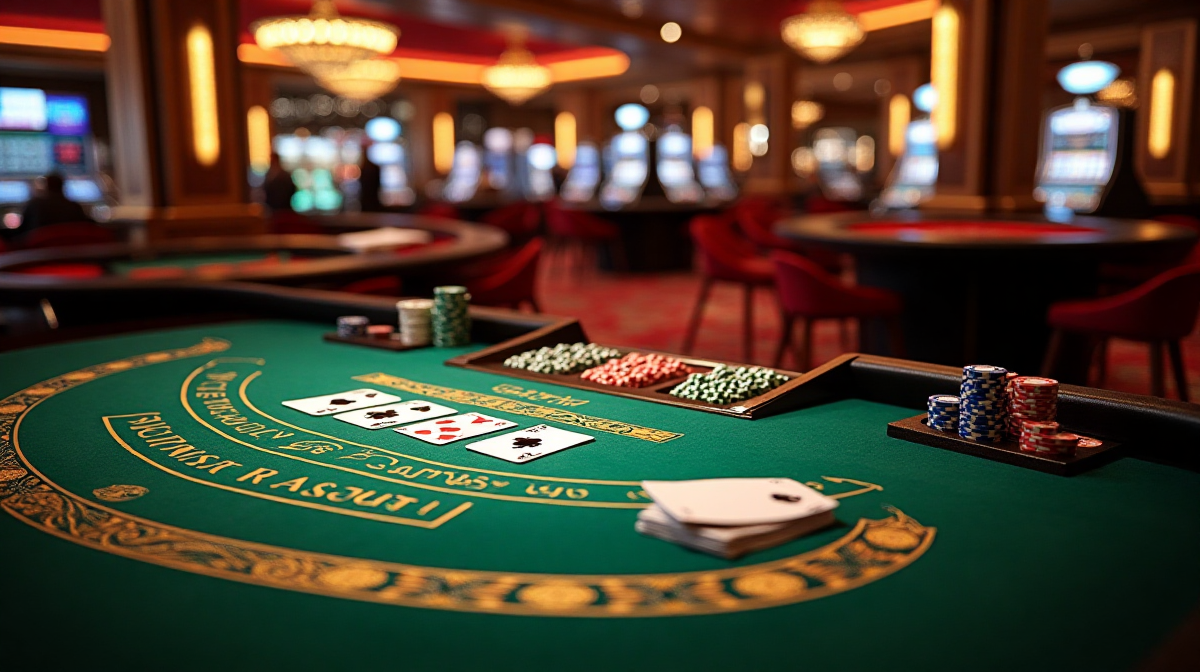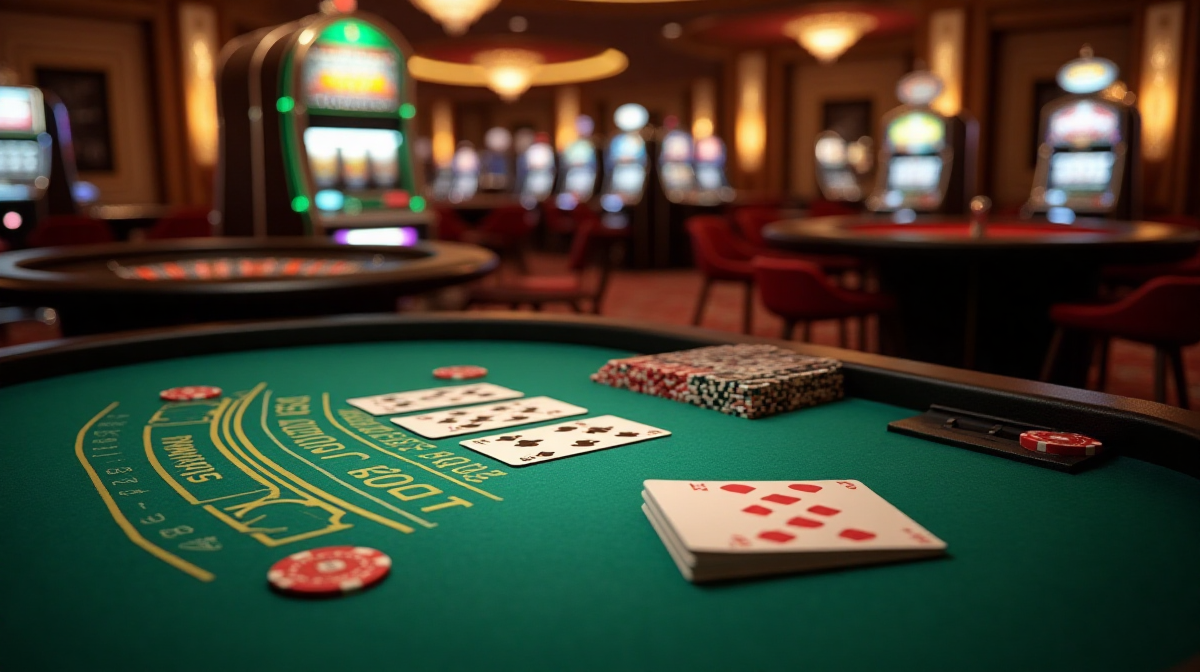Blackjack Rules: Master the Game Today
Introduction to Blackjack
What is Blackjack? – A Brief Overview
Blackjack, also known as 21, is a captivating casino game pitting players against the dealer. The objective is simple: achieve a hand value closer to 21 than the dealer, without exceeding it. It’s a game of skill and chance, and understanding the nuances can significantly improve your odds. Many people are looking for a lucky break, and sometimes that involves a turkey bet on something entirely different, but focusing on the game itself is the most effective strategy.
History of Blackjack – From Origins to Modern Play
The origins of Blackjack can be traced back to 18th-century France, where a similar game called Vingt-et-Un (Twenty-One) was popular. It made its way to the United States, where it evolved into the game we know today. Bonuses were introduced to incentivize play, and sometimes, a turkey bet promotion might be offered alongside the main game. The modern rules were standardized over time, and Blackjack quickly became a staple in casinos worldwide.
Why is Blackjack so Popular? – Appeal & House Edge
Blackjack’s popularity stems from its blend of simplicity and strategic depth. Unlike purely luck-based games, players can influence their outcomes through informed decisions. The house edge in Blackjack is relatively low compared to other casino games, particularly when employing basic strategy. You might find discussions online about a turkey bet today and its potential payout, but the consistent application of strategy in Blackjack offers a more reliable path to success.
Core Gameplay & Basic Rules
The Goal of the Game – Beating the Dealer
The core goal in Blackjack is not necessarily to get 21, but to beat the dealer’s hand without going over 21. You win if your hand is higher than the dealer's, or if the dealer 'busts' (goes over 21).
Card Values – Understanding How Cards are Scored
Number cards (2-10) are worth their face value. Face cards (Jack, Queen, King) are each worth 10. An Ace can be worth either 1 or 11, depending on which value benefits the hand more.
The Deal – How Hands are Dealt to Players & Dealer
Players and the dealer are each dealt two cards. The player's cards are typically dealt face up, while the dealer has one card face up and one card face down (the hole card).
Blackjack Terminology – Bust, Hit, Stand, Double Down, Split, Push
- Bust: Exceeding a hand value of 21.
- Hit: Requesting another card.
- Stand: Declining to take any further cards.
- Double Down: Doubling your initial bet and receiving exactly one more card.
- Split: Dividing a pair of cards into two separate hands.
- Push: A tie between the player and the dealer, resulting in the return of the bet.
Player Actions & Options
Hit – Taking Another Card
If your hand total is low, you can ‘hit’ to try and improve it without exceeding 21.
Stand – Keeping Your Current Hand
When you’re satisfied with your hand, you can ‘stand’ and end your turn.
Double Down – Doubling Your Bet for One More Card
If you believe your next card will give you a strong hand, you can ‘double down’, increasing your bet and receiving only one more card.
Split – Dividing a Pair into Two Separate Hands
If you are dealt a pair (two cards of the same rank), you can ‘split’ them into two separate hands, each with its own bet.
Surrender – Folding Your Hand and Losing Half Your Bet
Some casinos allow you to ‘surrender’ your hand and lose only half your bet.
Insurance – Protecting Against Dealer Blackjack
If the dealer shows an Ace, you can take ‘insurance’, which is a side bet that the dealer has Blackjack.
Dealer Rules & Play
Dealer's Obligations – When Must the Dealer Hit or Stand?
The dealer follows strict rules. Typically, they must hit if their hand total is 16 or less, and stand if it's 17 or more.
Dealer Busting – What Happens When the Dealer Exceeds 21
If the dealer busts, all remaining players win.
Dealer Blackjack – What Beats a Player Blackjack?
A dealer Blackjack (Ace and a 10-value card) beats any player hand except another Blackjack, resulting in a push.
Blackjack Payouts & Winning Hands
Standard Payouts – Blackjack, Winning Hands, Push
- Blackjack: Pays 3:2 (1.5 times your bet).
- Winning Hand: Pays 1:1 (equal to your bet).
- Push: Bet is returned.
Blackjack vs. Regular 21 – Understanding the Difference in Payout
A Blackjack (Ace and a 10-value card) has a higher payout than a regular 21.
Side Bets – Common Side Bets & Their Payouts
Some casinos offer side bets, but these generally have a higher house edge.
Blackjack Variations
American Blackjack vs. European Blackjack – Comparing Rule Differences
American Blackjack typically allows the dealer to hit on a soft 17 (Ace-6), while European Blackjack usually requires the dealer to stand on a soft 17.
Spanish 21 – Adding a Unique Twist to the Game
Spanish 21 uses a deck of 48 cards (removing the 10s) and offers unique bonus payouts.
Pontoon – A British Variant of Blackjack
Pontoon has different terminology and rules, such as “twist” instead of “hit” and “stick” instead of “stand”.

Basic Blackjack Strategy
Understanding Basic Strategy Charts – Why They are Important
Basic strategy charts provide optimal plays based on your hand and the dealer’s upcard, minimizing the house edge. Ignoring basic strategy is a common mistake. Some may even consider it a turkey bet in terms of maximizing your chances of winning.
When to Hit, Stand, Double Down, and Split – A Quick Guide
Basic strategy dictates when to hit, stand, double down, and split. For example, always split Aces and 8s.
The Importance of Bankroll Management – Playing Responsibly
Managing your bankroll is crucial. Set a budget and stick to it, avoiding chasing losses.
Advanced Blackjack Strategies
Card Counting – A More Complex Technique
Card counting involves tracking the ratio of high to low cards remaining in the deck to gain an advantage.
Shuffle Tracking – Difficulty & Legal Implications
Shuffle tracking attempts to predict where specific cards will appear after shuffling.
Team Play – Collaborating for an Edge
Team play involves multiple players working together to gain an advantage.
Common Blackjack Mistakes to Avoid
Ignoring Basic Strategy – The Biggest Mistake Players Make
Failing to follow basic strategy significantly increases the house edge.
Taking Insurance Too Often – Generally Not a Profitable Play
Insurance is rarely a profitable play in the long run.
Chasing Losses – Poor Bankroll Management
Trying to win back losses quickly often leads to reckless betting.
Where to Play Blackjack
Online Blackjack – Choosing a Reputable Casino
Numerous online casinos offer Blackjack. Ensure you choose a reputable and licensed casino. Be aware of potential scams when looking for a turkey bet prediction today.
Land-Based Casinos – The Traditional Blackjack Experience
Land-based casinos provide a traditional Blackjack experience with the social interaction of playing against a live dealer.
Live Dealer Blackjack – Combining the Best of Both Worlds
Live dealer Blackjack combines the convenience of online play with the authenticity of a live dealer.

Conclusion – Master the Game and Enjoy!
Recap of Key Rules and Strategies
Blackjack is a game of skill and chance. Understanding the rules, employing basic strategy, and managing your bankroll are essential for success. Even if you feel lucky enough for a turkey bet, solid fundamentals will improve your odds.
Resources for Further Learning and Practice
Numerous websites and books offer detailed Blackjack strategies and resources. A tool like a blackjack weapon (referring to a strategy chart) is more valuable than relying on luck. And remember, while excitement around a turkey bet might be tempting, consistent and informed play is the key to long-term enjoyment and success in Blackjack.

